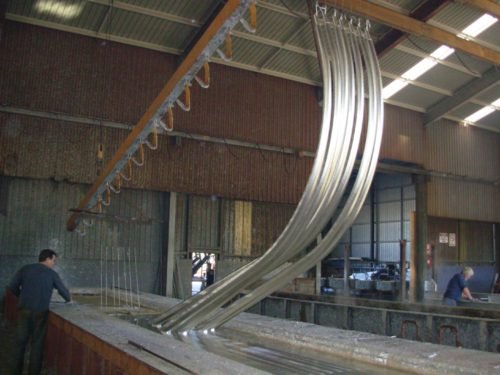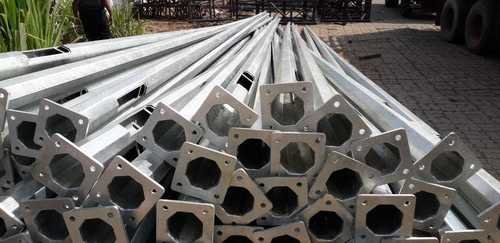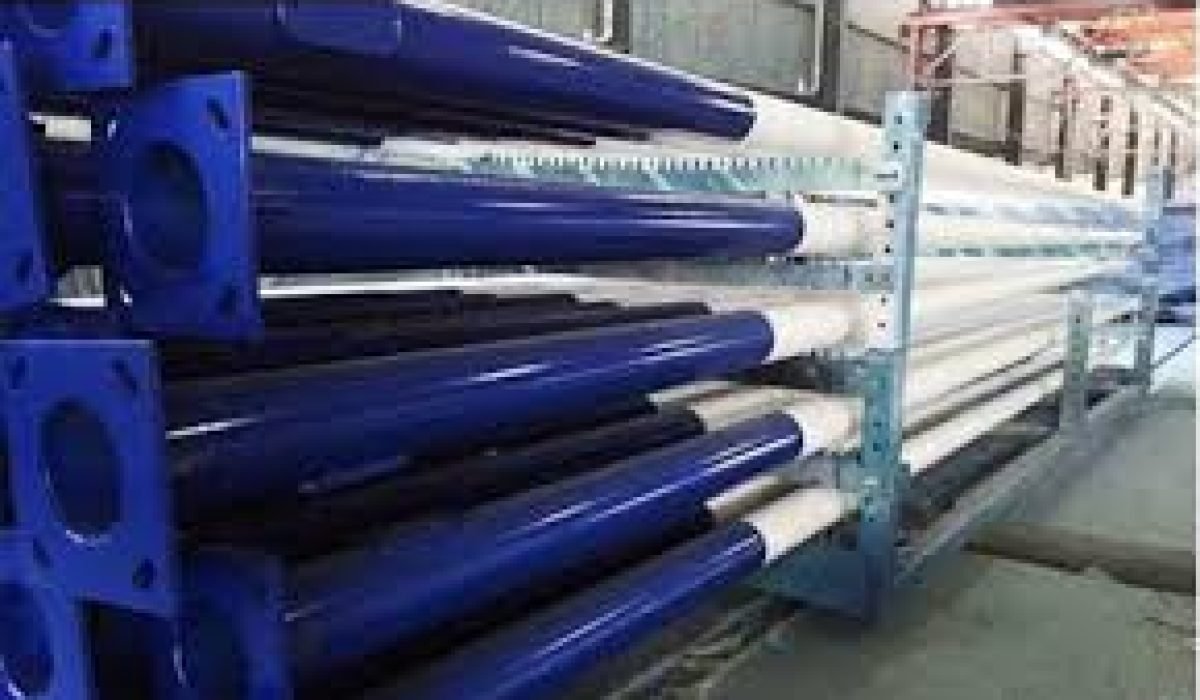If you’ve ever driven through a city after a rainy season and noticed some street poles still shining like new while others look eaten by rust, you’ve probably met the magic of galvanization. In my 15 years managing solar and infrastructure projects across East and Central Africa, I’ve seen this again and again—galvanized street light poles simply outlive most alternatives. But the reason isn’t just about coating; it’s about chemistry, cost, and context.
Let’s unpack why galvanized street light poles stand the test of time—especially in African climates where salt, humidity, and dust put steel to the ultimate test.
What Exactly Are Galvanized Street Light Poles?
In short: galvanized poles are steel poles protected with a layer of zinc that fights rust.
The process, known as hot-dip galvanizationn](https://en.wikipedia.org/wiki/Galvanization), involves immersing the steel pole into molten zinc at around 450°C. The zinc bonds with the steel surface to create a series of protective layers—zinc-iron alloys that are both hard and corrosion-resistant.
Why zinc?
Because zinc acts like a bodyguard. When moisture or oxygen tries to attack the steel, zinc willingly sacrifices itself first—a process called cathodic protection.
Here’s what that means in real-world terms:
| Material Type | Typical Lifespan (Outdoor Use) | Maintenance Needs | Relative Cost | Remarks |
|---|---|---|---|---|
| Painted Steel | 3–5 years | Frequent repainting | Low | Cheap initially, costly later |
| Stainless Steel | 15–25 years | Minimal | High | Excellent but expensive |
| Hot-Dip Galvanized Steel | 20–40 years | Low | Moderate | Best balance of cost & lifespan |
I’ve seen galvanized poles installed in 2008 in Kampala that are still structurally sound today—while nearby painted ones were replaced twice.
Why Galvanized Poles Survive Better in Africa’s Harsh Conditions
Africa’s climate is tough on steel. From the humid coasts of Mombasa to the dusty heat of Lusaka, corrosion works fast and silently.

From what I’ve observed, hot-dip galvanizing keeps poles alive for three main reasons:
-
Barrier Protection
The zinc layer forms a tough shield that blocks moisture and oxygen. Unlike paint, it doesn’t peel off with sun or rain. Even when scratched, nearby zinc keeps guarding the exposed part. -
Cathodic Protection
When rust wants to start, zinc reacts first—it literally sacrifices itself to protect the steel beneath. -
Self-Healing Surface
Minor scratches often repair themselves naturally. Zinc oxide builds up and seals small wounds on the metal surface.
I once managed a coastal lighting project in Dar es Salaam where we tried to save money using painted poles. They rusted out in under three years. After replacing them with galvanized ones, we haven’t had a single failure in over a decade.
Why Paying More Upfront Actually Saves You Money
It’s the same conversation I’ve had with dozens of EPC clients: galvanized poles look expensive—until you run the math.
Painted poles need repainting every few years. Crews, scaffolding, traffic control—it all adds up. Then comes replacement. Galvanized poles? You install them once and forget about them for a generation.
Here’s what it looks like when you add it up:
| Type | Initial Cost (USD/unit) | 10-Year Maintenance Cost | Expected Lifespan | Total Lifecycle Cost |
|---|---|---|---|---|
| Painted Mild Steel | $90 | $45–60 | 6–8 years | $135–150 |
| Hot-Dip Galvanized Steel | $110 | $10–15 | 25–40 years | $120–125 |
When municipalities budget long term, the numbers speak for themselves. Less maintenance, fewer replacements, fewer sleepless nights.
Not All Galvanized Poles Are Equal
One trap I see too often—contractors assuming “galvanized” means “good.” It doesn’t.
Quality depends on:
-
Zinc Coating Thickness (Measured in Microns or g/m²)
- Thicker coatings last longer.
- Standard outdoor poles: 70–100 μm.
- Coastal or industrial sites: 120 μm or more.
-
Steel Preparation Before Dipping
- If the surface isn’t cleaned properly, the zinc won’t stick evenly.
-
Standard Compliance
- Check for ISO 1461, ASTM A123, or BS EN ISO 1461.
I’ve turned down shipments before because the coating was patchy or bubbling. If you see too much shine and uneven tone, it’s often a red flag. Dull but consistent zinc layers usually mean the job was done right.
Galvanized Poles in Solar Street Lighting
Solar street lighting brings unique stress: wind loads, battery heat, coastal humidity. Ordinary steel poles struggle.
From my experience, galvanization makes a difference in:
- Preventing corrosion around brackets and mounts
- Holding strength under wind or vibration
- Reducing the need for on-site maintenance in remote areas
- Providing better grounding for electrical safety
We supplied galvanized poles for a solar lighting project in Gulu, Northern Uganda, back in 2021. Five rainy seasons later, the coating is still firm. The only complaint? Pigeons.
The panels, batteries, and controllers may evolve—but the pole is your long-term bet.
How to Specify Galvanized Poles in EPC Tenders
Tenders often fail because specifications are vague. If the tender says only “steel pole,” expect the cheapest bidder—and usually, the fastest rust.
Here’s what I suggest including:
Recommended Specification Example:
- Material: Mild steel, hot-dip galvanized per ISO 1461
- Minimum coating: 85 μm
- Welding: CO₂ or MIG, uniform seams
- Design: Conical or octagonal taper with base plate
- Mounting height: 8m–12m
- Finish: Galvanized only, no paint
A few extra lines in your tender save years of maintenance pain and public complaints later.
How to Spot Bad Galvanization in the Field

Here’s my usual checklist during inspections:
- Rough, inconsistent coating
- Grey powdery surface (oxidation before delivery)
- Rust near welds or bolt holes
- Peeling or flaking near the base
- Color variation that looks “striped” or patchy
If you see any of these, don’t install it. Once erected, there’s no practical way to re-galvanize.
In the End, Galvanized Poles Just Last
People often ask if painting can work “just as well.” My honest answer: only if you enjoy repainting every few years.
Galvanized street light poles last longer because they protect from the inside out. The zinc doesn’t just coat—it bonds. It’s a chemical marriage that endures through floods, heat, and time.
I’ve walked past poles we installed 15 years ago that still stand strong, a little dull maybe, but untouched by rust. That quiet reliability—that’s value.


